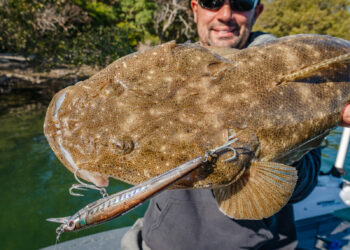
IN this month’s Fish Facts Dr Ben Diggles looks at some of the science behind Fish Attracting Devices (FADs) and why they are so effective at living up to their name.
FOR thousands of years, fishers have known that fish at sea are attracted to floating objects. In fact, it’s thought the first reports of exploitation of this behaviour came from Roman author Oppian in 200 AD, when he described the use of floating objects to catch mahi mahi (Coryphaena hippurus) in the Mediterranean. Since that time it has become clear that traditional fishers worldwide often deployed fish attracting devices (FADs) made out of logs and palm leaves to improve their catches of pelagic fish including tunas and wahoo as well as mahi mahi.
However the reasons why sometimes thousands of tonnes of pelagic fish of various species will aggregate around even small structures such as a moored buoy are not entirely clear. To complicate matters further, predators probably aggregate around FADs for entirely different reasons than baitfish. The behaviour of fish around FADs is indeed an interesting topic for scientists to explore.
It is thought that larval pelagic fishes naturally recruit to FADs just like they recruit to other natural floating objects like sargassum drifts and so on. Juvenile fish may also be attracted to FADs for the predator avoidance qualities the cover of the FAD gives. Other incidental functions of FADs for baitfish may include use as a food source or a spawning substrate.
In contrast, larger predatory fish like schools of skipjack (Katsuwonus pelamis), yellowfin (Thunnus albacares) and bigeye tunas (T. obesus) also appear to be attracted to FADs. There is often simply not enough baitfish under the FAD to support the biomass of predatory fish for any length of time, yet the fish continue to associate with such objects. Because of this, the reasons why FADs attract and hold larger fish are of great interest to fisheries scientists, especially given the recent trend from the late 20th century onwards to employ more and more FADs to improve fishing success.
Regardless of how they work, the effectiveness of floating objects for attracting pelagic fish cannot be questioned. One Japanese purse seining study around Papua New Guinea found that moderately aged flotsam with fouling organisms lured between 0.5 to 18.3 tons of fish per day. Tagging studies in these areas have found that tagged tunas are three to five times more likely to be recaptured around a FAD than they are in open waters.
Because of increased fishing success around FADs, tens of thousands of drifting FADs are now being used by commercial purse seine fishing fleets worldwide, including “smart FADs” complete with GPS and radar reflectors as well as fish finders, all of which increase the fishing efficiency of purse seine operations. With satellite hookups, commercial operators now know when fish numbers under the smart FAD reach a certain trigger level, at which time they relocate the FAD and run the purse seine around it, an extremely efficient fishing method.
A related concern is the evidence that FADs work so well they can modify the migration patterns of some species of pelagic fish. In recent times ultrasonic tagging studies have found interesting results in this field of research. They have found that many species of predatory fish can home in on FADs from surprisingly large distances, with tagged tuna accurately re-locating their home FADs after swimming on foraging forays up to 12km away.
In a recent study from the central Pacific Ocean, skipjack, yellowfin and bigeye tunas were studied at the same time to see if there were any behavioural differences between them. Some of the tagged fish stayed around the FAD for over 10 days at depths of up to 150 meters during the day, but all three species regularly went on temporary feeding forays away from the FAD, usually at night.
Of the three species examined, the juvenile bigeye tuna tended to be most site attached, swimming away from the FAD less often, while the swimming depth was shallowest for the skipjack tuna, but unfortunately not shallow enough to allow selective harvest of mature skipjack and yellowfin tuna by the purse seine without taking immature bigeye as well.
Other interesting information found for bigeye include afternoon dive behaviour, where fish dive down to the thermocline in the afternoon to feed on fish and crustaceans, with both tuna and their prey rising back to the surface as the light fades into the evening.
In summary, while humans have been fishing FADs for thousands of years, today’s technology means that industrial use of FADs has become so common that it can alter the migration and distribution of some tuna schools in the open ocean. Of greater concern is the fact that more smaller fish are now caught around FADs than ever before, including immature bigeye tuna, which because of their larger size at maturity and greater site attachment, appear to be more vulnerable to FAD fishing than yellowfin and skipjack.
Whether industrial fishing of FADs endanger fish stocks, or just increase fishing efficiency, is a moot point, with opinions seeming to indicate they may be OK, provided the risks are known and the fishery is managed properly.




















